f4 biology coordination and response
1/35
There's no tags or description
Looks like no tags are added yet.
Name | Mastery | Learn | Test | Matching | Spaced |
|---|
No study sessions yet.
36 Terms
describe what are sense organs
a group of receptor cells responding to specific stimuli : light, sound, touch, temperature and chemicals
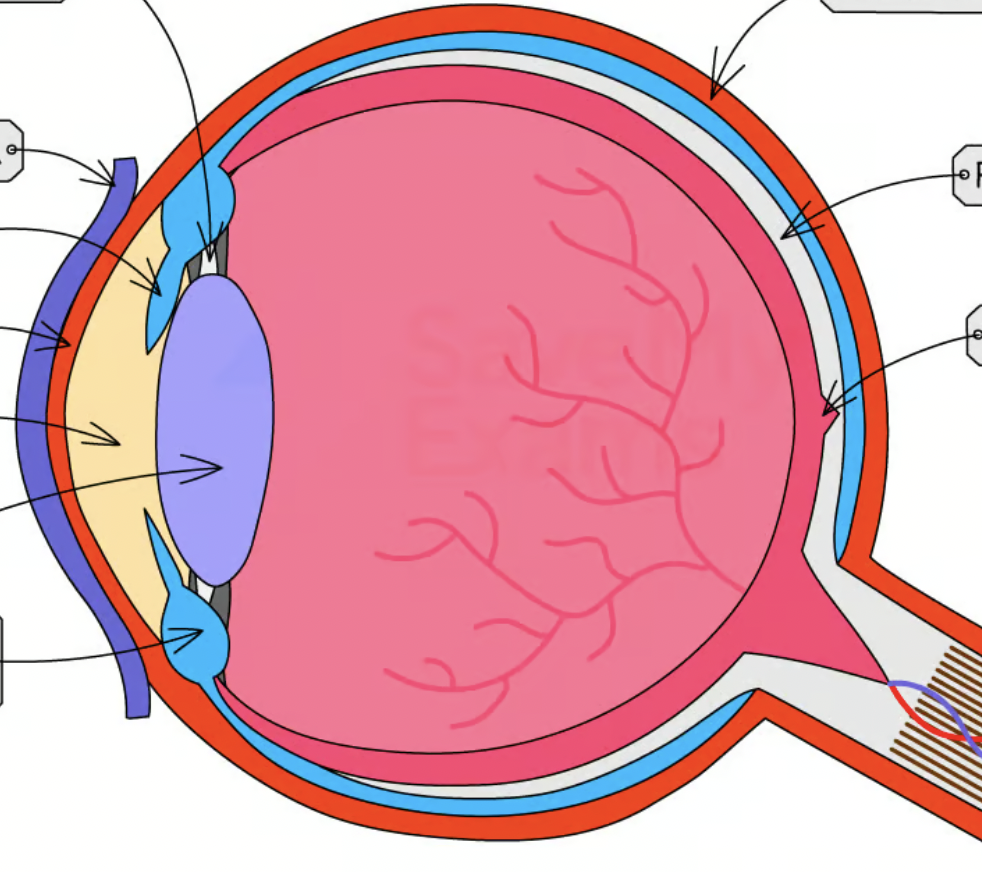
label the eye diagram
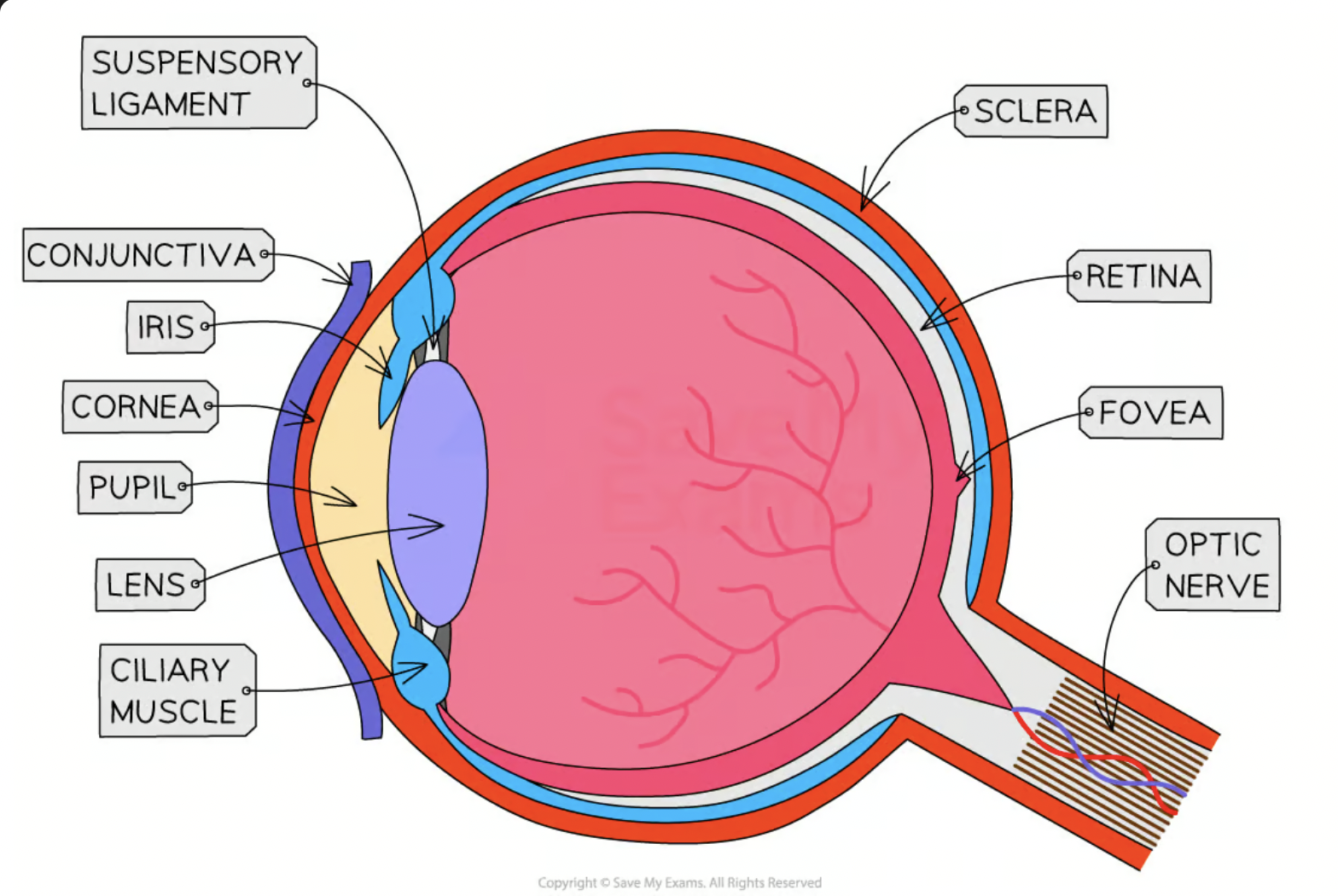
describe the function of the iris
Muscle that controls how much light enters the pupil
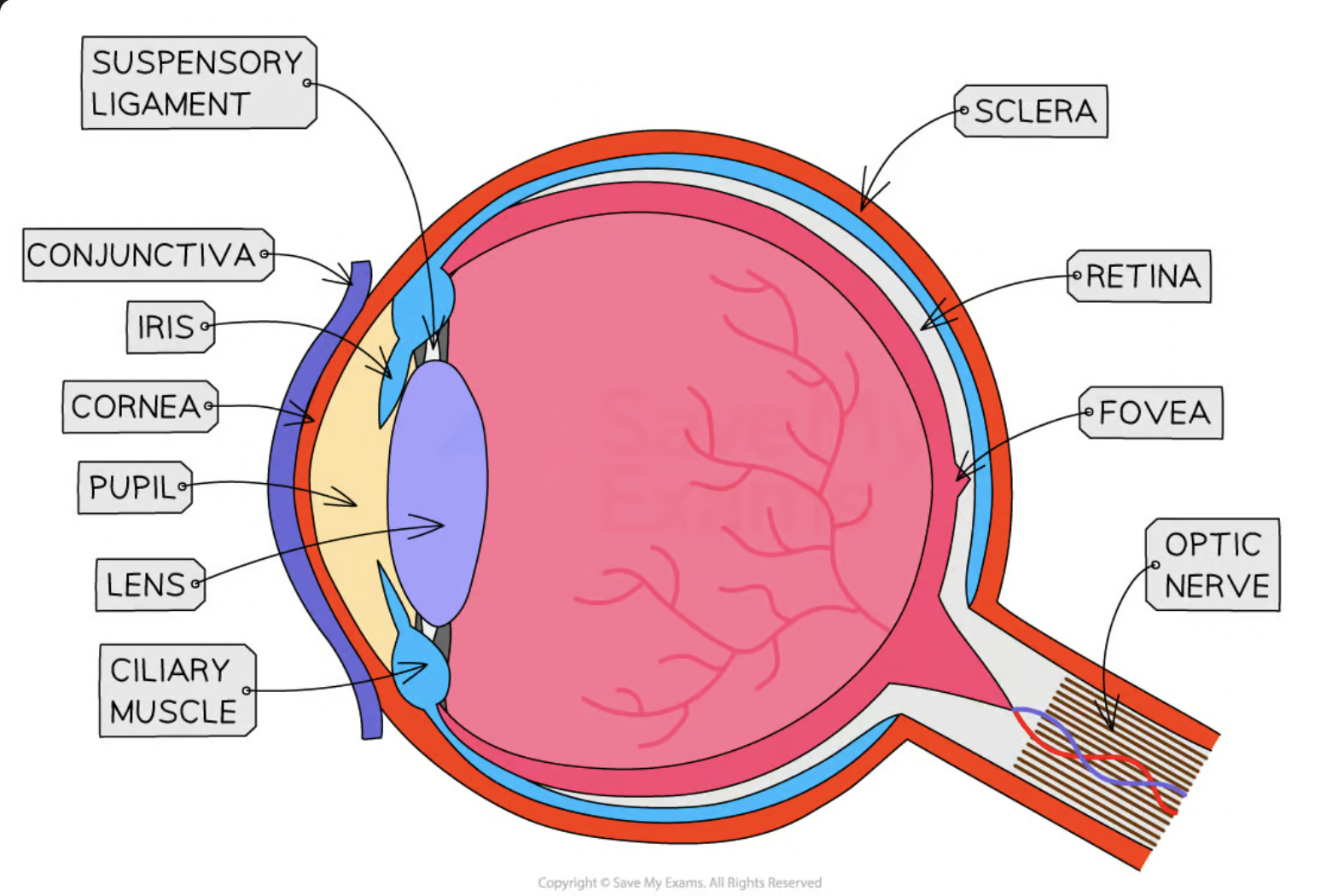
describe the function of the cornea
Transparent covering at the front of the eye that refracts (bends) light
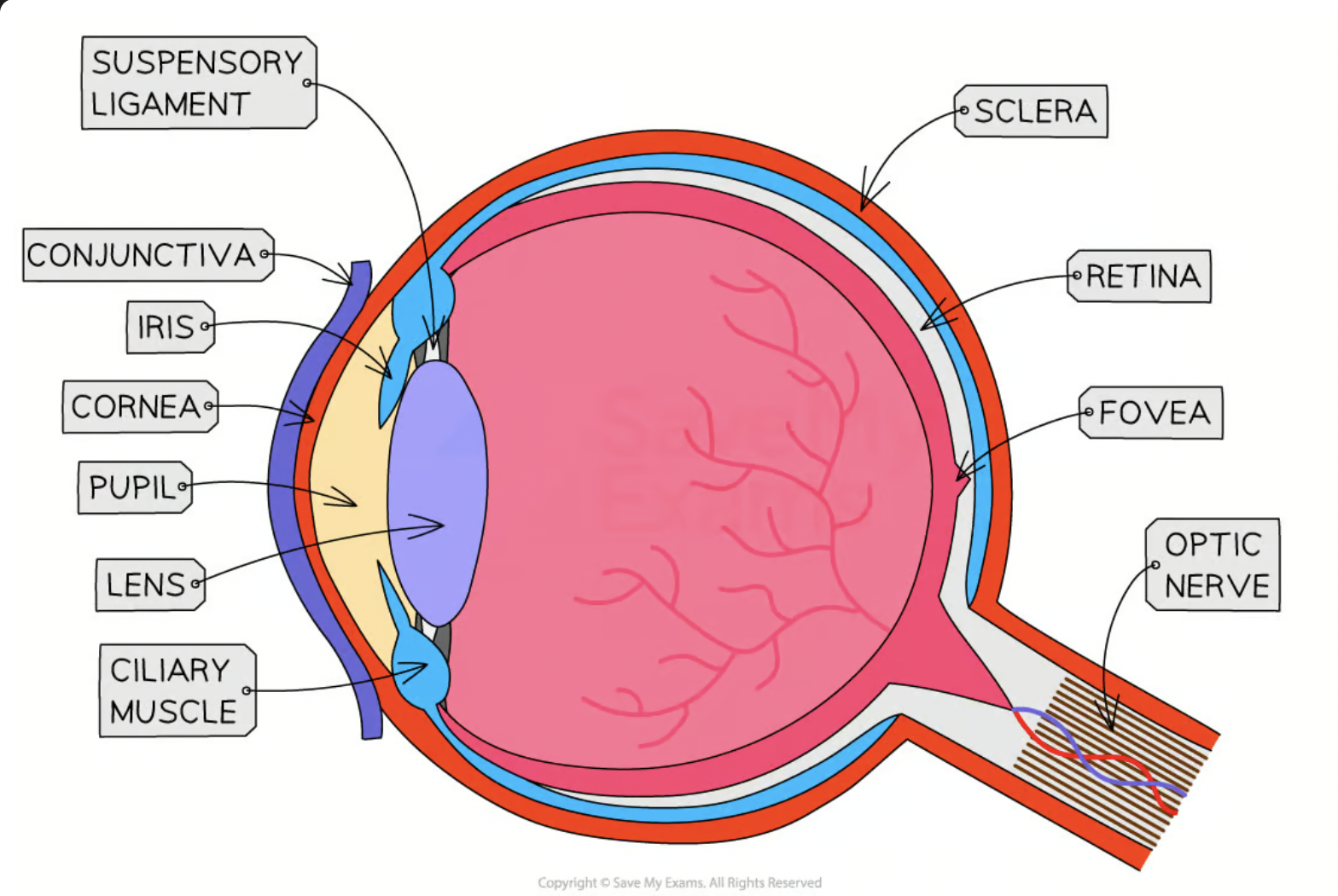
describe the function of the lense
Transparent disc that changes shape to focus light onto the retina
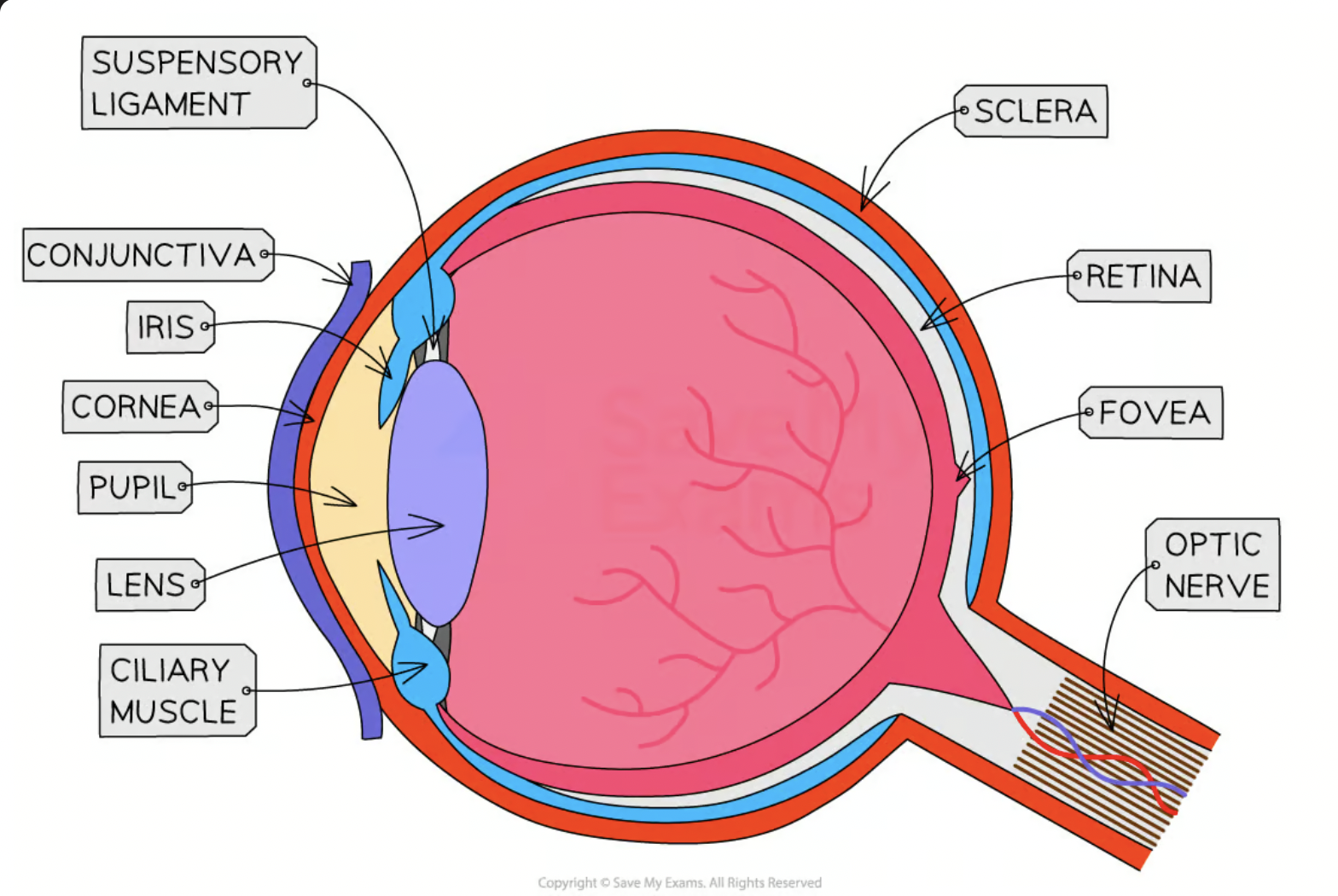
describe the function of the retina
Layer of light receptor cells that detect light intensity and colour
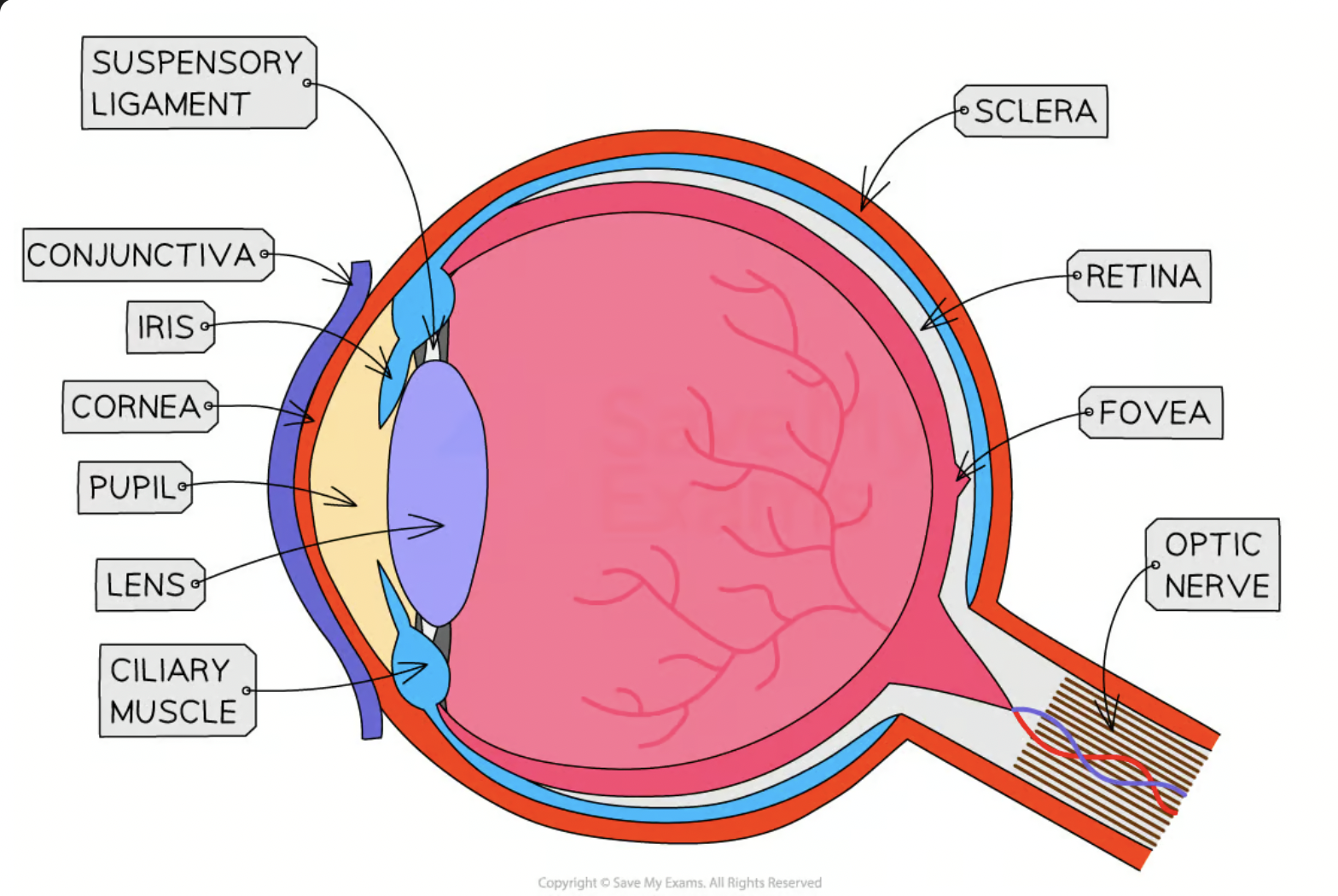
describe the function of the optic nerve
Sensory neurone that carries electrical impulses from the eye to the brain
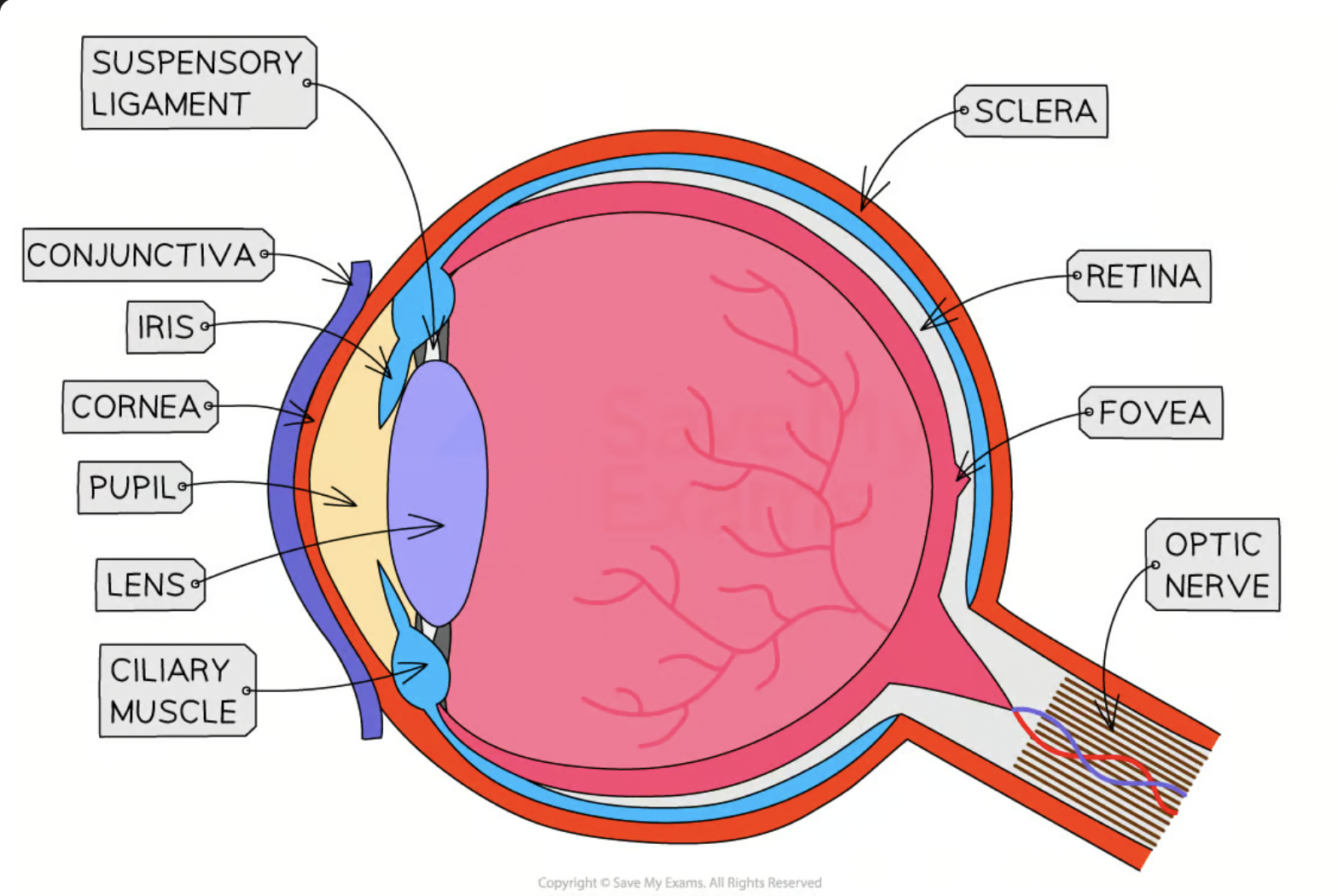
describe pupil reflex limited to change in light intensity, and pupil diameter
The pupil reflex is an example of a reflex action; its role is to control the light that enters the eye by altering the pupil diameter
In dim light the pupil dilates in order to allow as much light into the eye as possible
In bright light the pupil constricts in order to prevent too much light entering the eye and damaging the retina
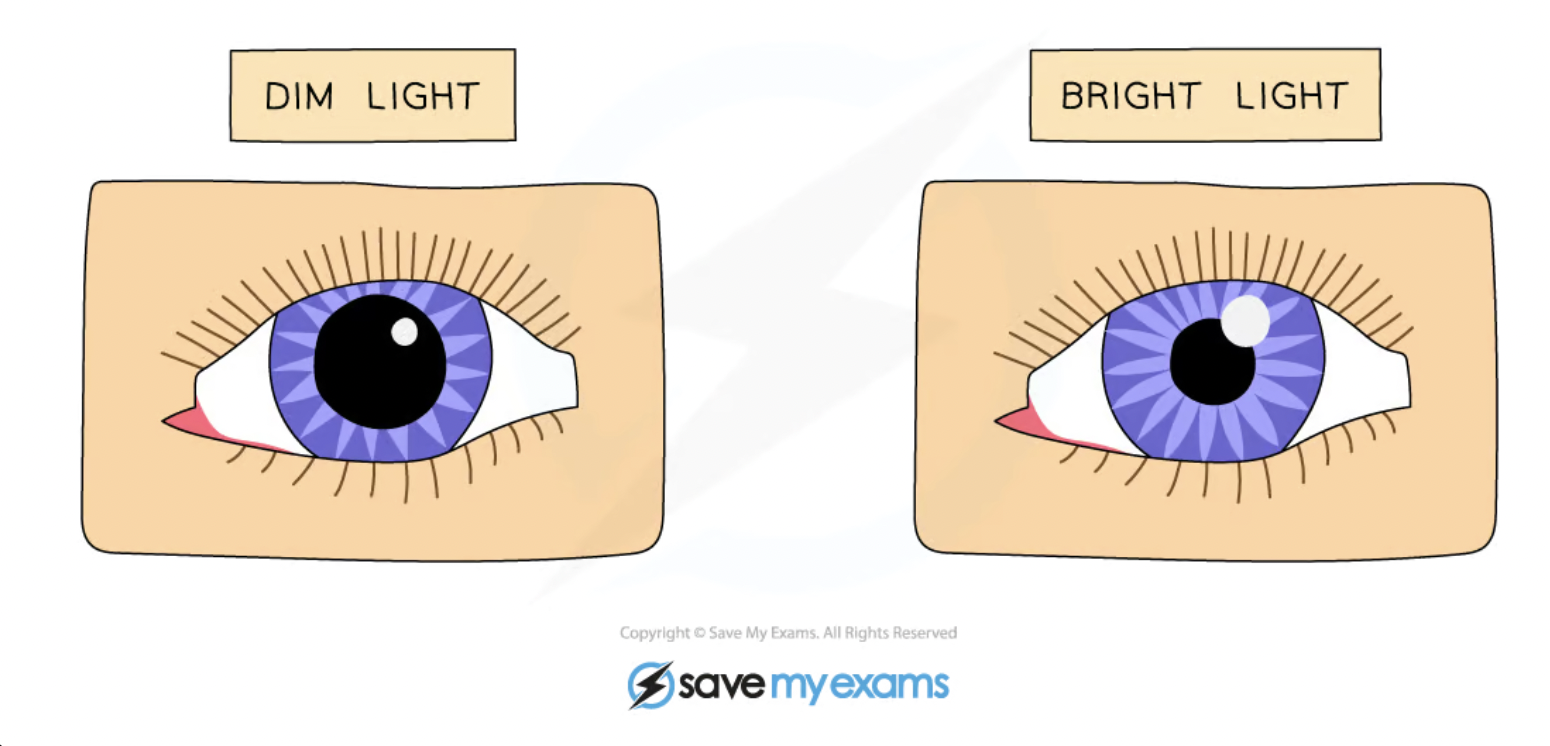
describe what is meant by antagonistic action in the iris
The circular and radial muscles of the iris are antagonistic, meaning that they work against each other
When one set of muscles contracts the other relaxes, and vice versa
describe what happens to iris muscles in dim light
When light levels are low the pupil reflex acts to dilate the pupil and maximise the light entering the eye; this is achieved as follows:
light receptors in the eye detect low light levels
the radial muscles contract and the circular muscles relax
the pupil dilates
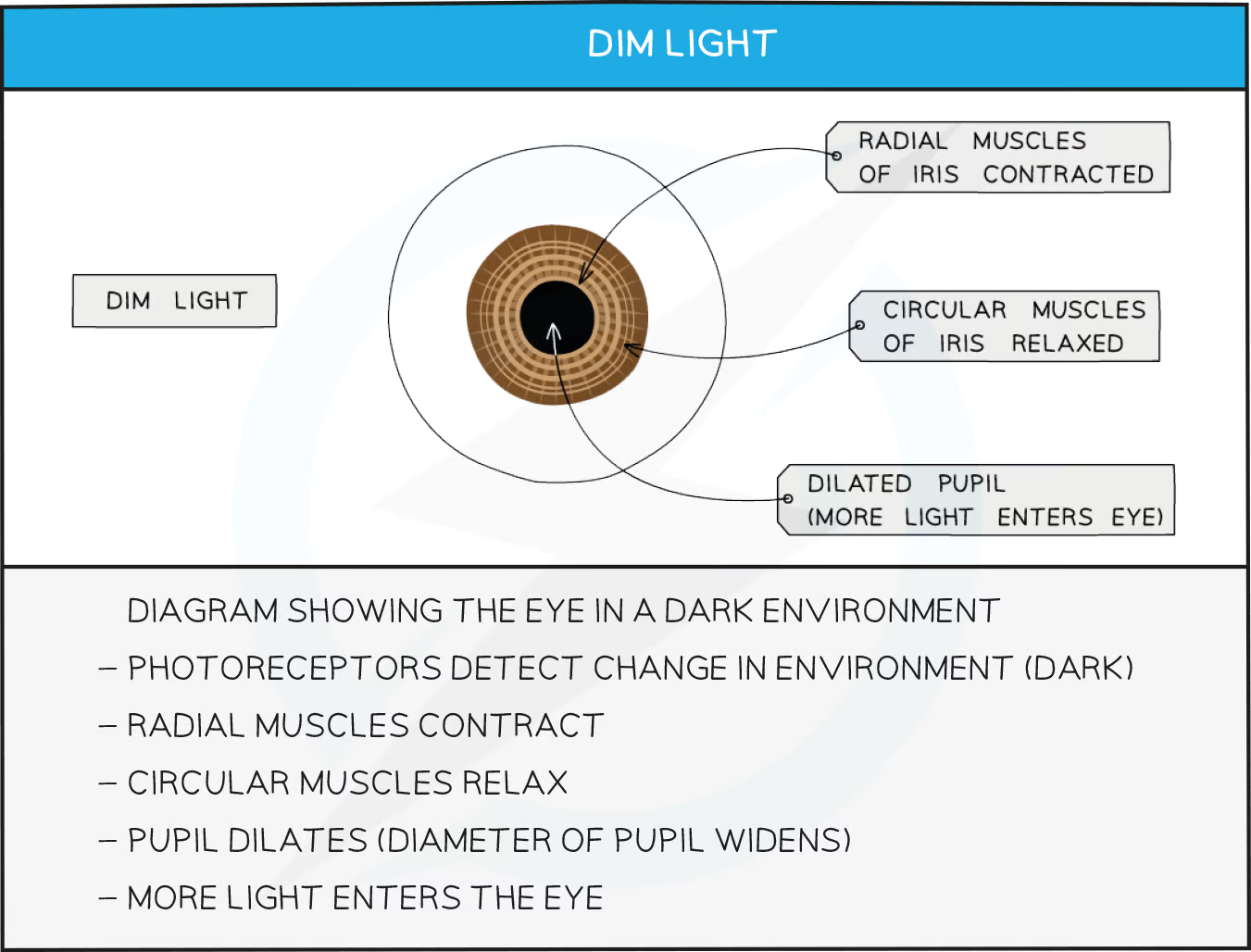
what are the two iris muscles
radial muscles
circular muscles
describe what happens to iris muscles in bright light
When light levels are high the pupil reflex acts to constrict the pupil to reduce light entering the eye and protect the retina; this occurs as follows:
light receptors in the eye detect bright light
the radial muscles relax and the circular muscles contract
the pupil constricts
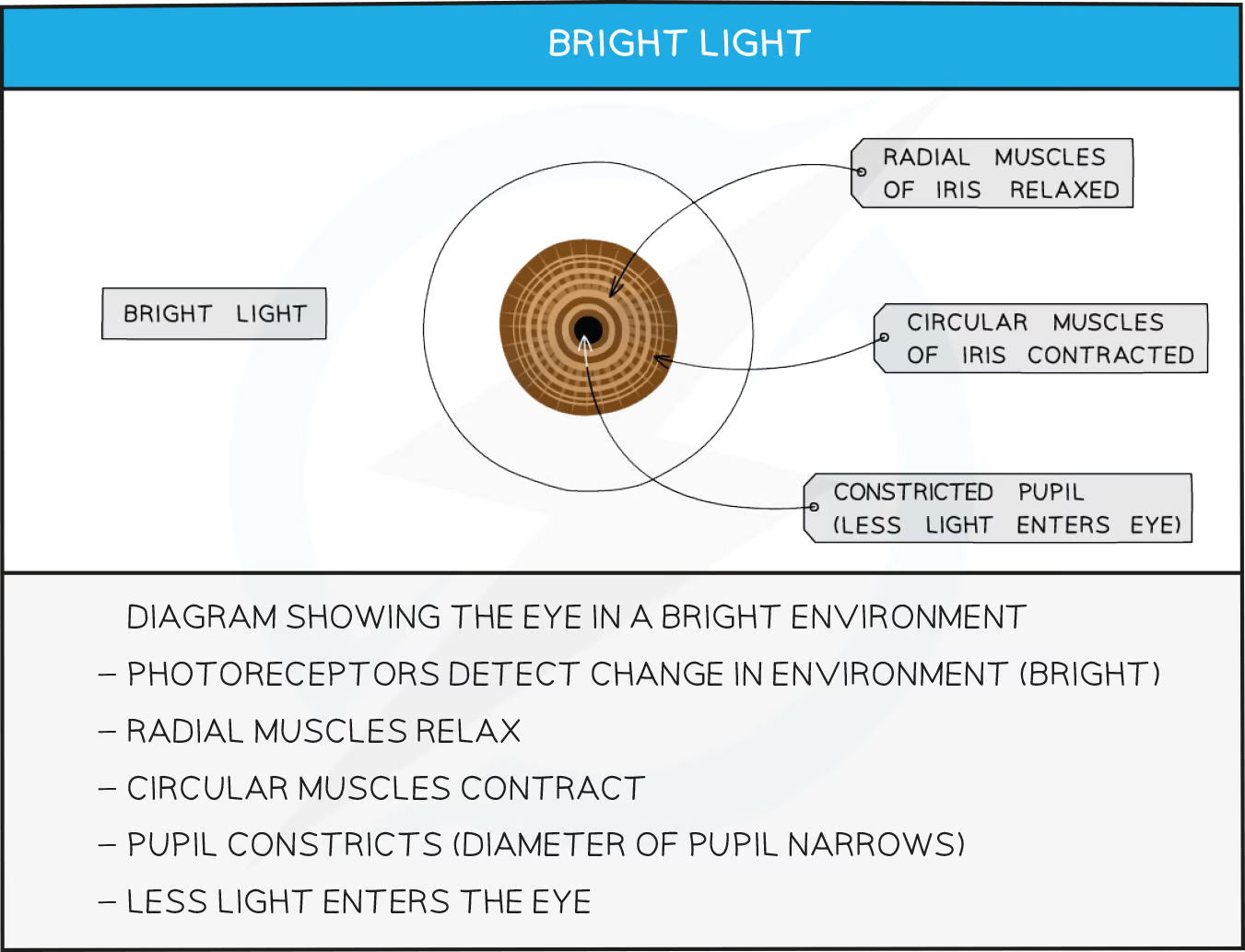
describe the term eye accomodation
Accommodation is the term used to describe the way in which the eye focuses on near or distant objects
describe the accomodation to view near objects
When an object is close up:
the ciliary muscles contract
the suspensory ligaments loosen
the suspensory ligaments exert less pull on the lens, allowing the lens to become more rounded
light is refracted more
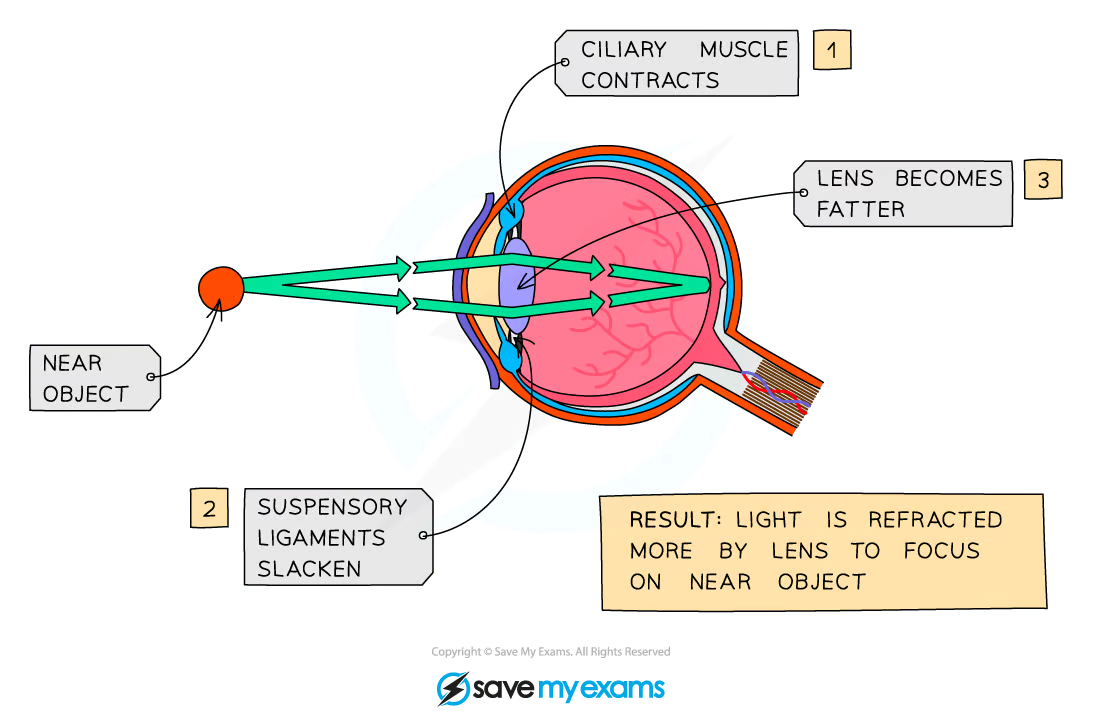
describe the accomodation to view distant objects
When an object is far away:
the ciliary muscles relax
the suspensory ligaments tighten
the suspensory ligaments pull on the lens, causing it to become thinner
light is refracted less
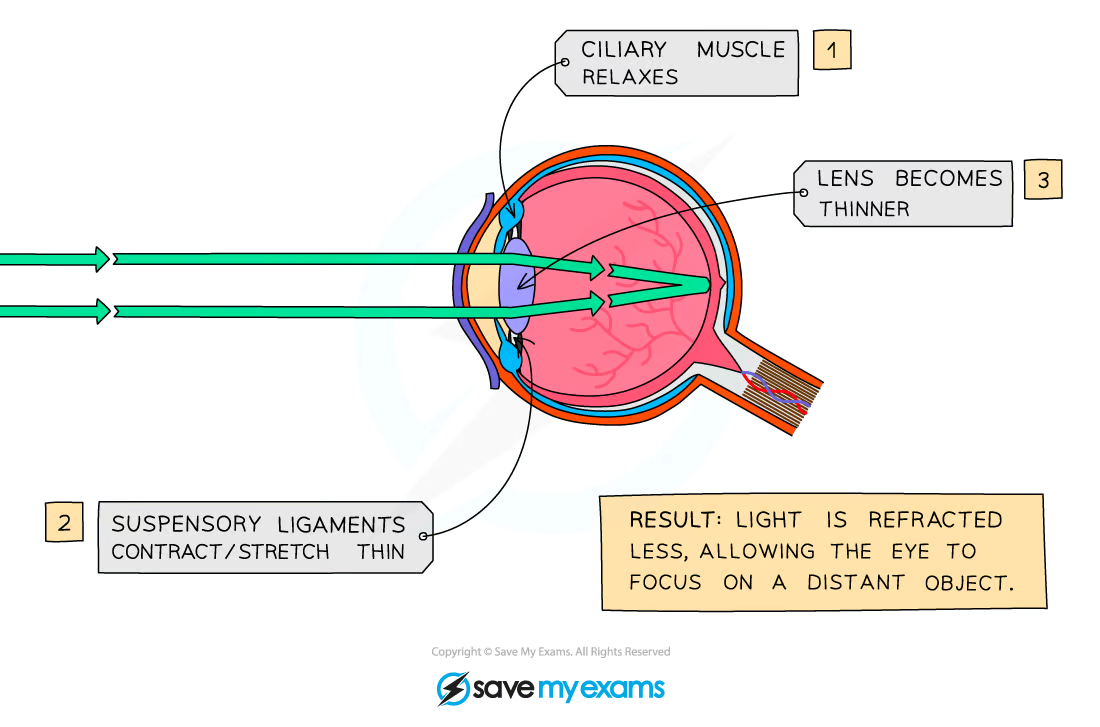
describe the distribution of rods and cones in the retina of a human
Rods and cones are not distributed evenly across the retina:
Rod cells are found all over the retina, with the exception of the blind spot
Cone cells are concentrated in the fovea, the region of the eye onto which light is focused by the process of accommodation
The fovea enables the brain to form sharp, coloured images when light is effectively focused by the eye
define a rod
Rods and cones are the two types of receptor cell present in the retina of the eye
Rod cells and cone cells have different roles in detecting light stimuli:
Rods can detect light at low levels, so play an important role in night vision
define a cone
Rods and cones are the two types of receptor cell present in the retina of the eye
Rod cells and cone cells have different roles in detecting light stimuli:
Three different types of cones can detect light at three different wavelengths, enabling colour vision
state the function of the fovea
describe the term hormone
a hormone is a chemical substance produced by a gland and carried by the blood which alters the activity of one or more specific target organ.
name 4 specific endocrine glands and state the hormones they secrete
ovaries secrete oestrogen
testes secrete testosterone
pancreas secretes insulin
adrenal glands secrete adrenaline
describe adrenaline and its effects
adrenaline redies the bodie for a ‘fight or flight’ response.
effects:
increase breathing rate
increase pupil diameter
increase heart rate
compare nervous and hormonal control, limited to speed of action and duration effect
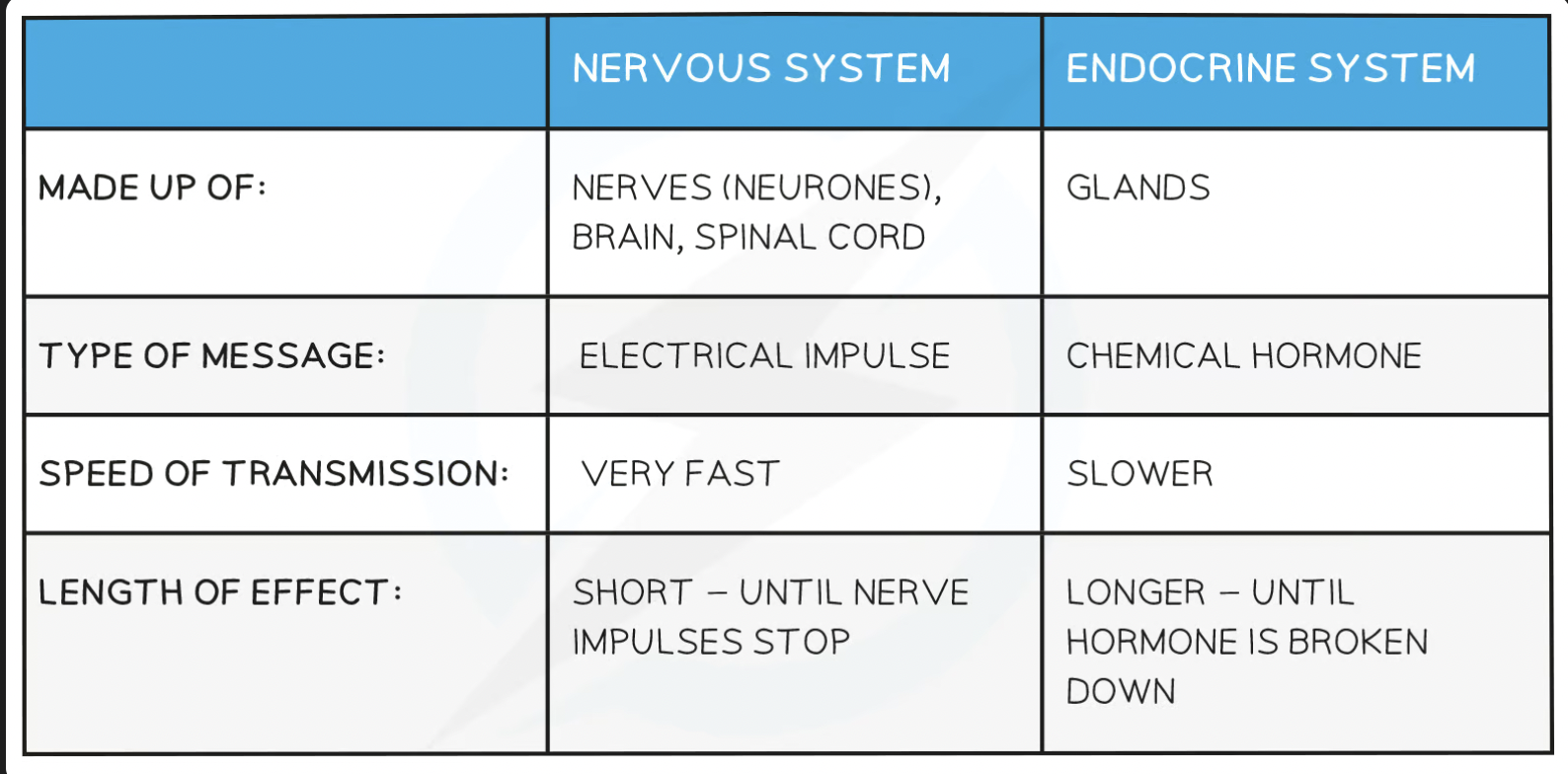
what is glucagon
glucagon Glucagon is a hormone secreted by the pancreas when blood glucose falls and stimulates liver and muscle cells to convert stored glycogen into glucose to be released into the blood
describe the role of adrenaline in the control of metabolic activity limited to the increase of blood glucose concentration
It causes a range of different things to happen in the body, all designed to prepare it for movement (ie fight or flight).
increasing blood glucose concentration for increased respiration in muscle cells
describe the role of adrenaline in the control of metabolic activity limited to increase of heart rate.
increasing pulse rate and breathing rate so glucose and oxygen can be delivered to muscle cells, and carbon dioxide taken away, from muscles cells more quickly
describe what is meant by homeostasis
homeostasis is described as the mantainance of the constant internal environment
internal conditions within the body (such as temperature, blood pressure, water concentration, glucose concentration etc) need to be kept within set limits in order to ensure that reactions in body cells can function and therefore the organism as a whole can live
state the role of insulin
Insulin is secreted into the blood at times when blood glucose levels are high
This is (most often) directly after a meal
The kidneys can only cope with a certain level of glucose in the blood
If the level gets too high, glucose gets excreted and is lost in the urine
To avoid this, insulin temporarily converts excess glucose into glycogen in the liver and muscles
Insulin decreases blood glucose concentration
The glycogen is converted back to glucose several hours later when blood glucose levels have dipped due to respiration in all tissues
describe the concept of homeostatic control bu negative feedback with refference to a set point.
Negative feedback occurs when conditions change from the ideal or set point and returns conditions to this set point
It works in the following way:
if the level of something rises, control systems are switched on to reduce it again
if the level of something falls, control systems are switched on to raise it again
Negative feedback mechanisms are usually a continuous cycle of bringing levels down and then bringing them back up so that overall, they stay within a narrow range of what is considered ‘normal’
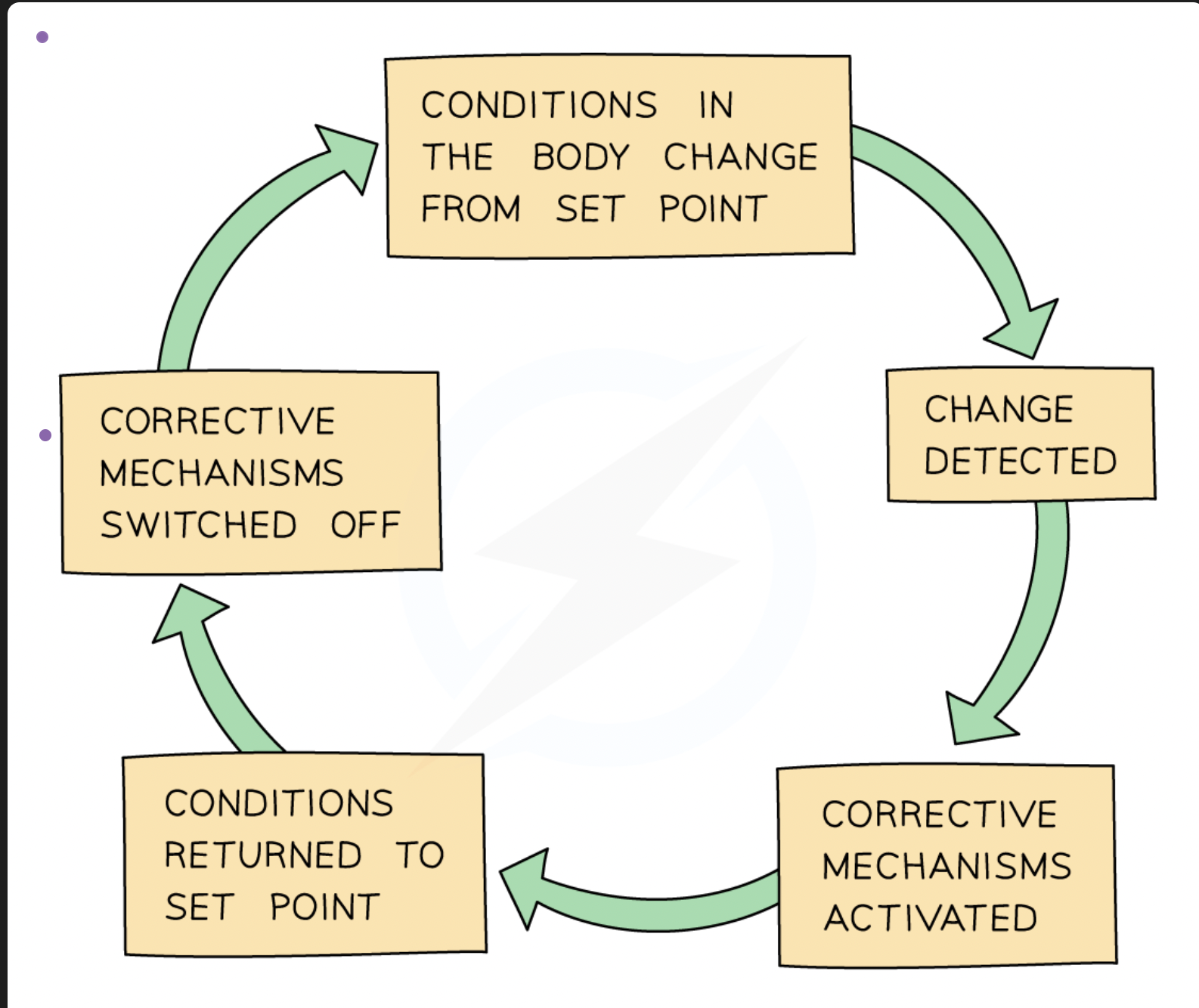
describe the control of blood glucose regulation by the liver and the roles of glucagon and insulin
Blood glucose levels are controlled by a negative feedback mechanism involving the production of two hormones - insulin and glucagon
Both hormones which control blood glucose concentration are made in the pancreas
Insulin is produced when blood glucose rises and stimulates liver and muscle cells to convert excess glucose into glycogen to be stored
Glucagon is produced when blood glucose falls and stimulates liver and muscle cells to convert stored glycogen into glucose to be released into the blood
outline the treatment of type 1 diabetes
Type 1 diabetes is a condition where the blood glucose levels are not able to be regulated as the insulin-secreting cells in the pancreas are not able to produce insulin
This means that blood glucose levels are often far too high
It can be treated by injecting insulin
The extra insulin causes the liver to convert glucose into glycogen, which reduces the blood glucose level
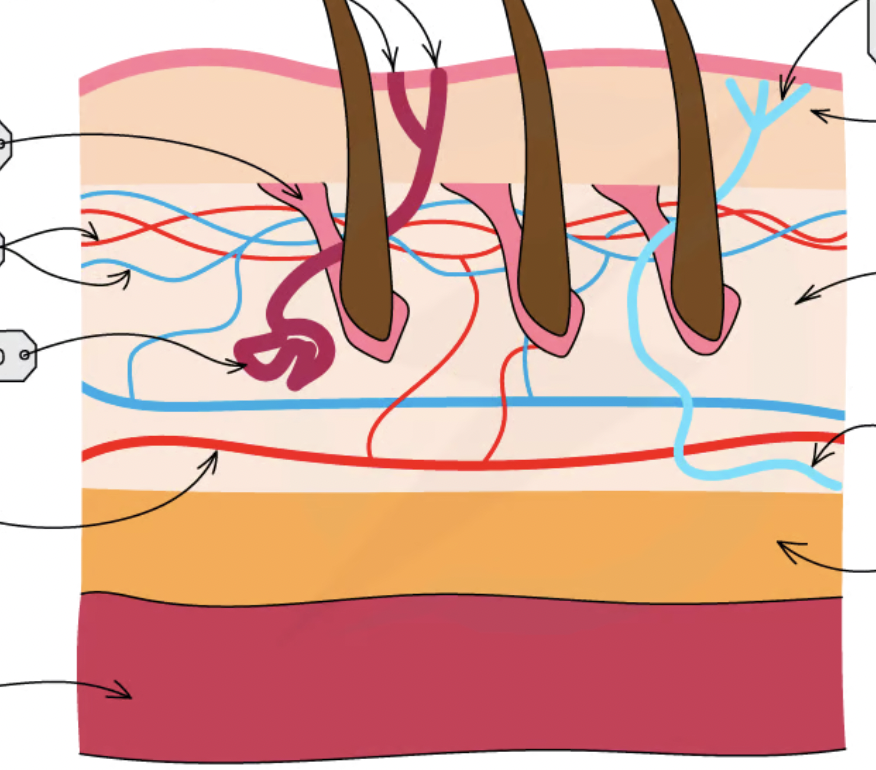
identify in the image the hairs, hair erector muscles, sweat glands, receptors, sensory neurones, blood vessels and fatty tissues
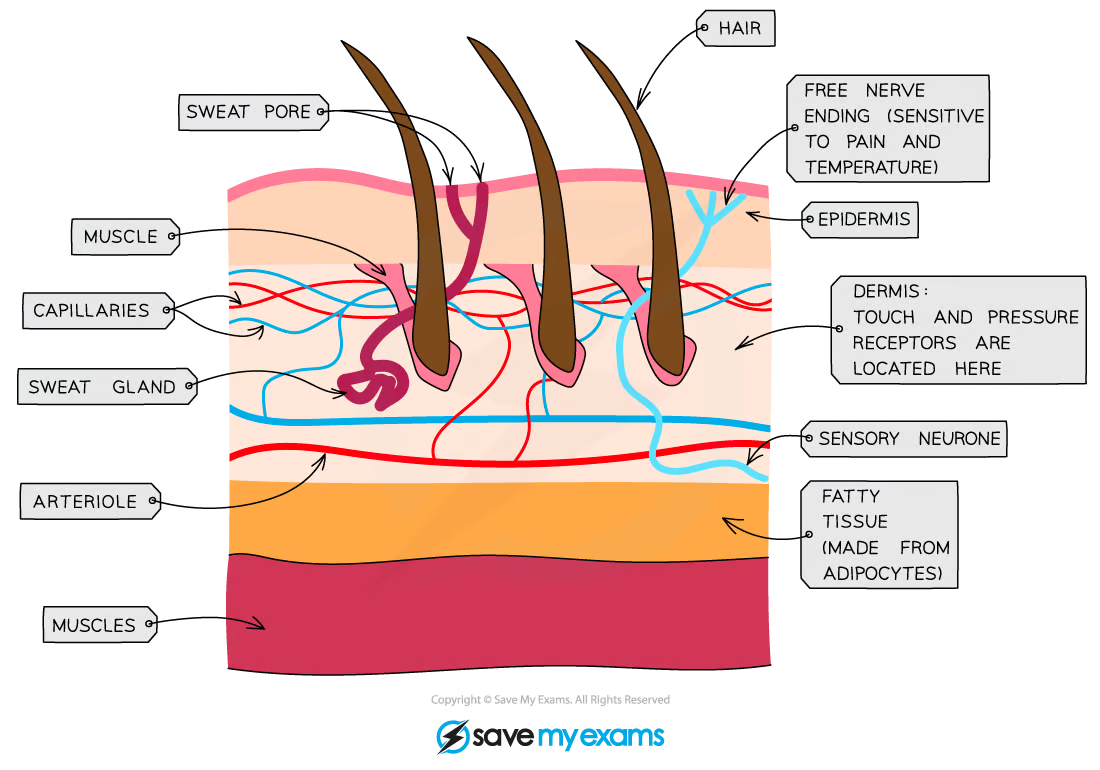
describe the maintenance of a constant internal body temperature in mammals in termos of insulation, sweating, shivering and the role of the brain
Regulation is controlled by the brain which contains receptors sensitive to the temperature of the blood
The skin also has temperature receptors and sends nervous impulses to the brain via sensory neurones
The brain responds to this information by sending nerve impulses to effectors in the skin to maintain the temperature within a narrow range of the optimum, 37°C
Fatty tissue under the dermis acts as a layer of insulation to prevent too much body heat being lost through the skin
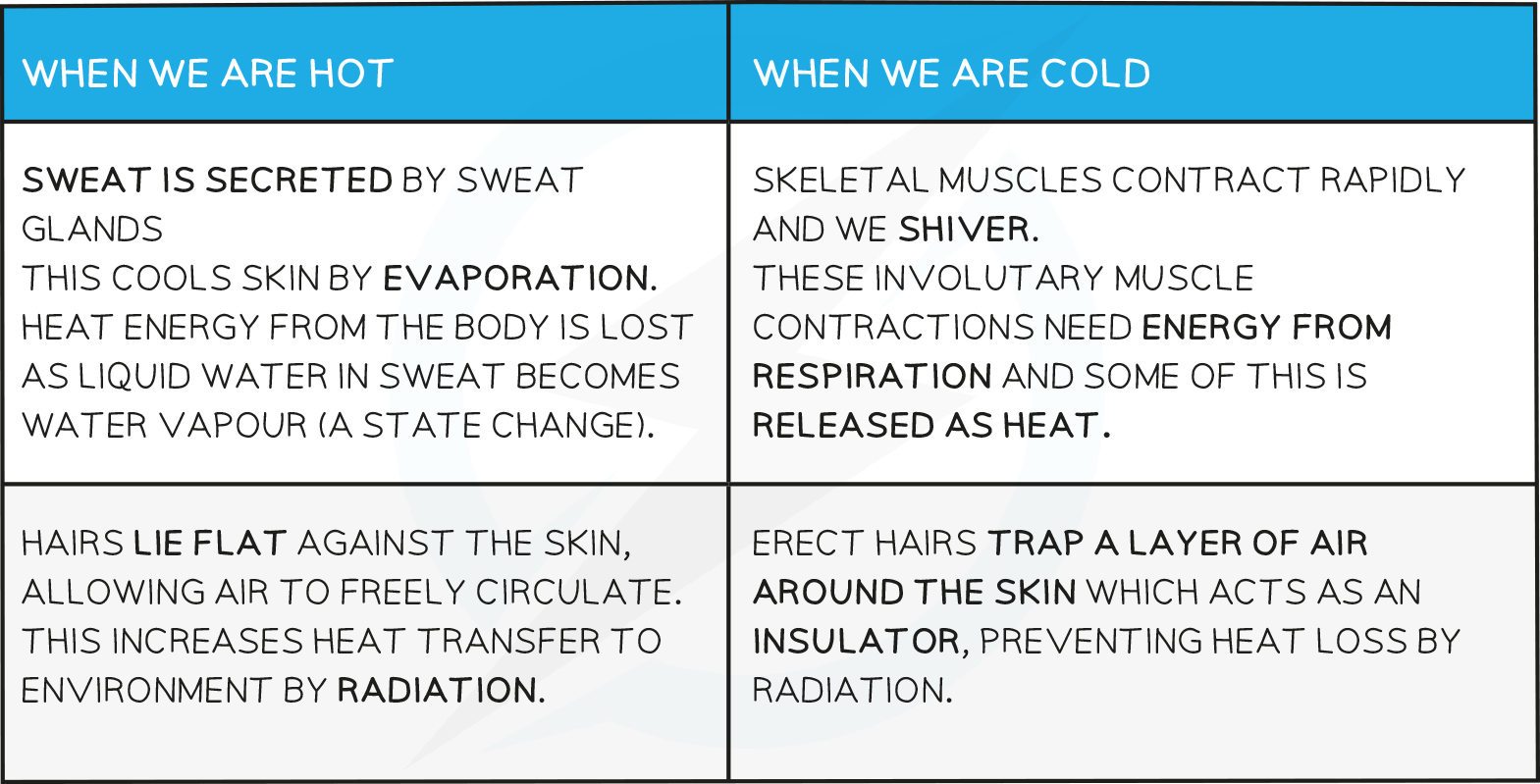
describe the mantainance of a constant internal body temperature in mammals in terms of vasodilation and vasoconstriction of arterioles supplying skin surface capilaries
When we are cold blood flow in capillaries slows down because arterioles leading to the skin capillaries get narrower - this is known as vasoconstriction
This reduces the amount of heat lost from blood by radiation as less blood flows through the surface of the skin
When we are hot blood flow in capillaries increases because blood vessels to the skin capillaries get wider - this is known as vasodilation
This cools the body as blood (which carries heat around the body) is flowing at a faster rate through the skin’s surface and so more heat is lost by radiation
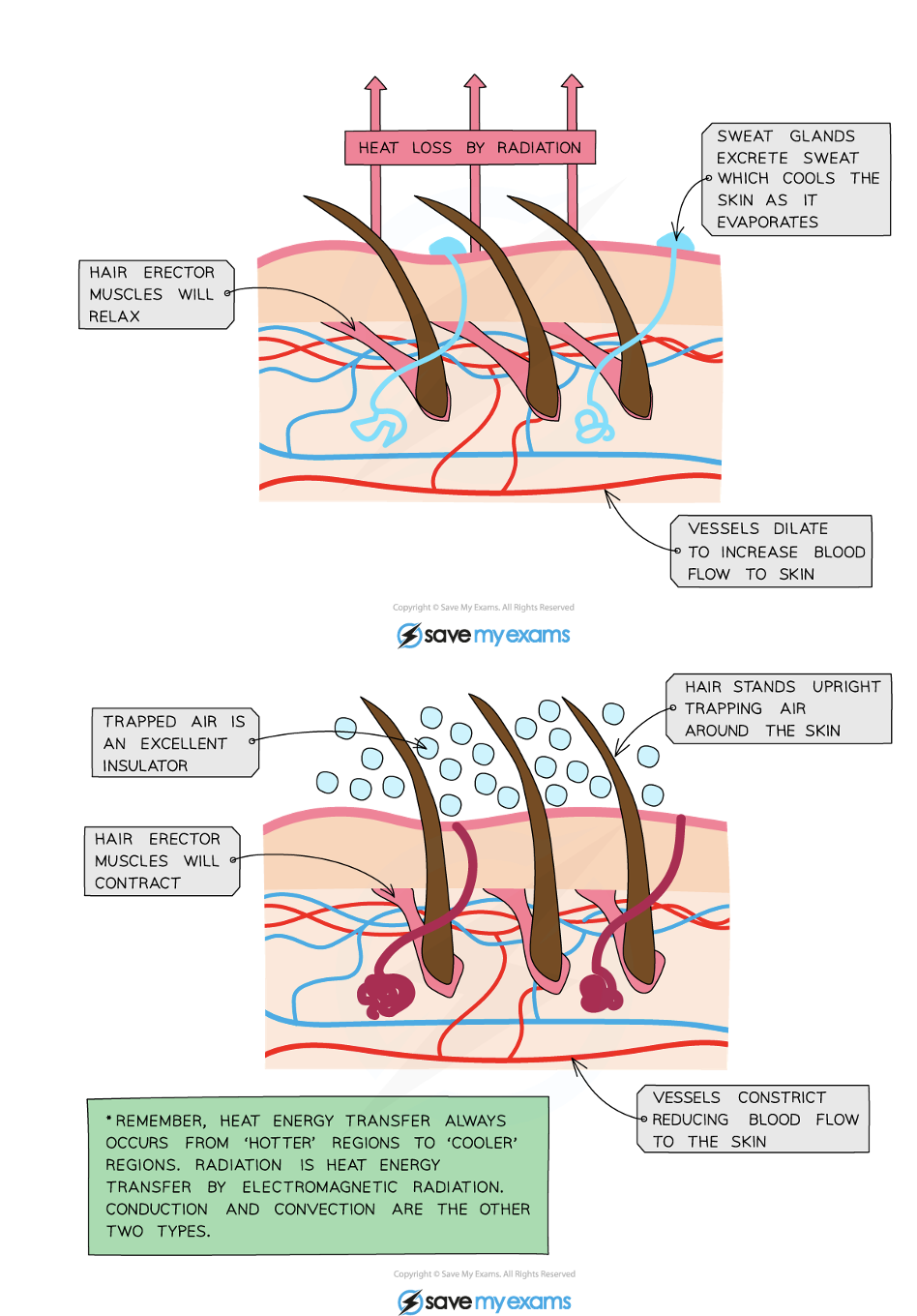
describe what is meant by gravitropism
a respond by which plants grow towards or away from gravity
Shoots must grow upwards, away from gravity and towards light, so that leaves are able to absorb sunlight
This means that shoots have a positive phototropic response and a negative gravitropic response
Roots need to grow downwards into the soil, away from light and towards gravity, in order to anchor the plant and absorb water and minerals from the soil particles.
This means that roots have a negative phototropic response and a positive gravitropic response
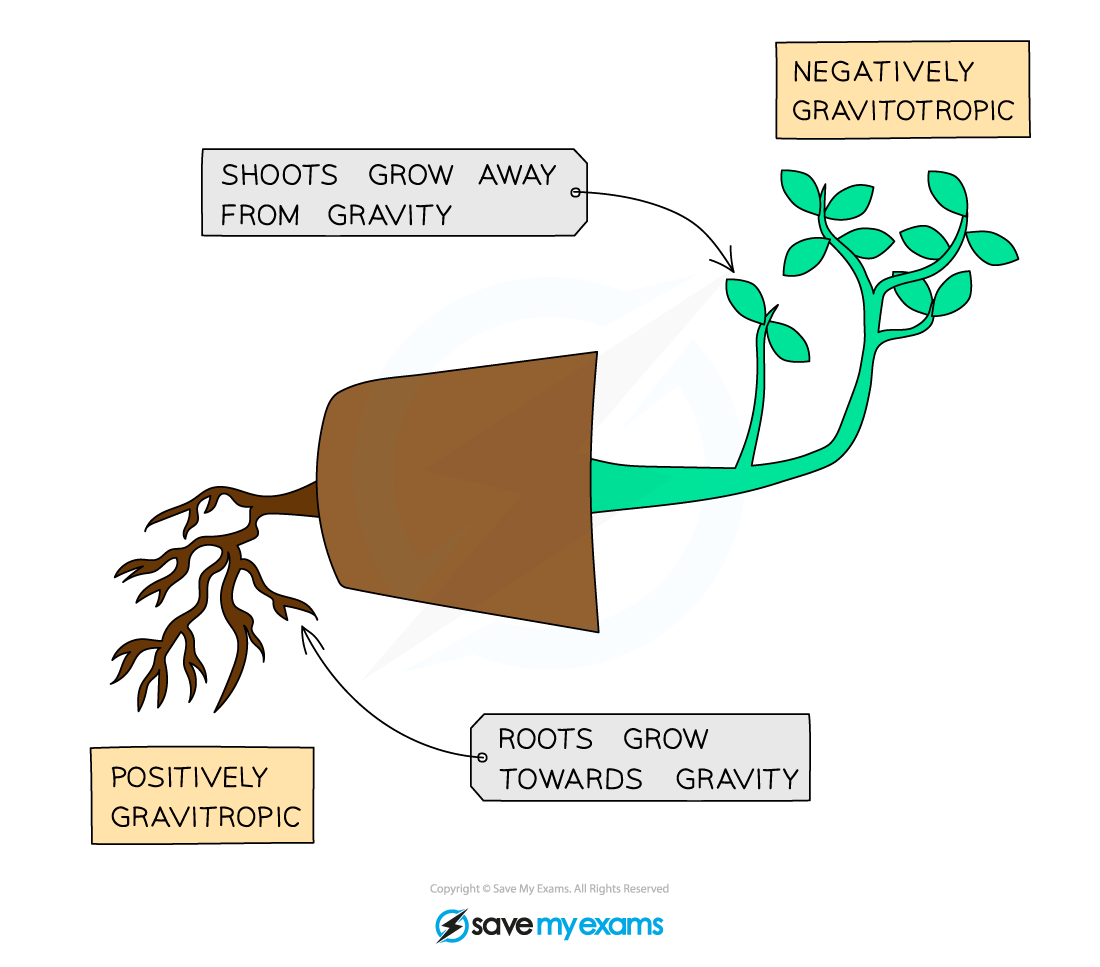
describe what is meant by phototropism
a respond by which a part of a plant grow towards or away from the direction of the light source